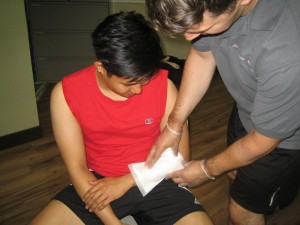Wound closure is performed with sutures using thread or staples, depending on the form and location of a wound. Whether caused by injuries or surgical procedures, wounds should be closed to promote proper healing and minimize the risk for infection.
The placement of sutures is a surgical procedure of bringing the skin and tissue together using a material that keeps a wound closed. The traditional sutures involve a thread or strand of material, but staples are also used in some cases.
Close look on wound closure methods
What are the types of sutures?

Sutures are available as either absorbable or non-absorbable. The absorbable sutures are eventually broken down by the body over time and completely dissolve. Some materials that are used to create these sutures are derived from animal products that were specially processed. The other absorbable sutures are made out of synthetic polymer materials.
Permanent, non-absorbable sutures are oftentimes preferred since they are resistant to body chemicals that can dissolve them early in the healing process. These are useful for maintaining long-term tissue wound closure and healing. The sutures are usually made out of polypropylene, silk or nylon.
Medical staples
The types of staples are categorized based on the shape or material. These staples are usually made out of titanium or stainless steel but also made from other materials such as chromium, iron, plastic or nickel. The staples can be curved, straight or circular.
The staples are utilized as an alternative to sutures in areas that are difficult to stitch or during procedures that should be carried out quickly.
Recovery after wound closure
As soon as the wound has adequately healed to endure the expected stress or pressure on the area, the staples or stitches must be removed. If the stitches are left in place longer than that period, it will likely leave behind an unwanted scar.
- The facial stitches usually remain in place for 3-5 days.
- Joint stitches are left in place for 10-14 days.
- Stitches to the extremities are left in place for approximately 10 days.
